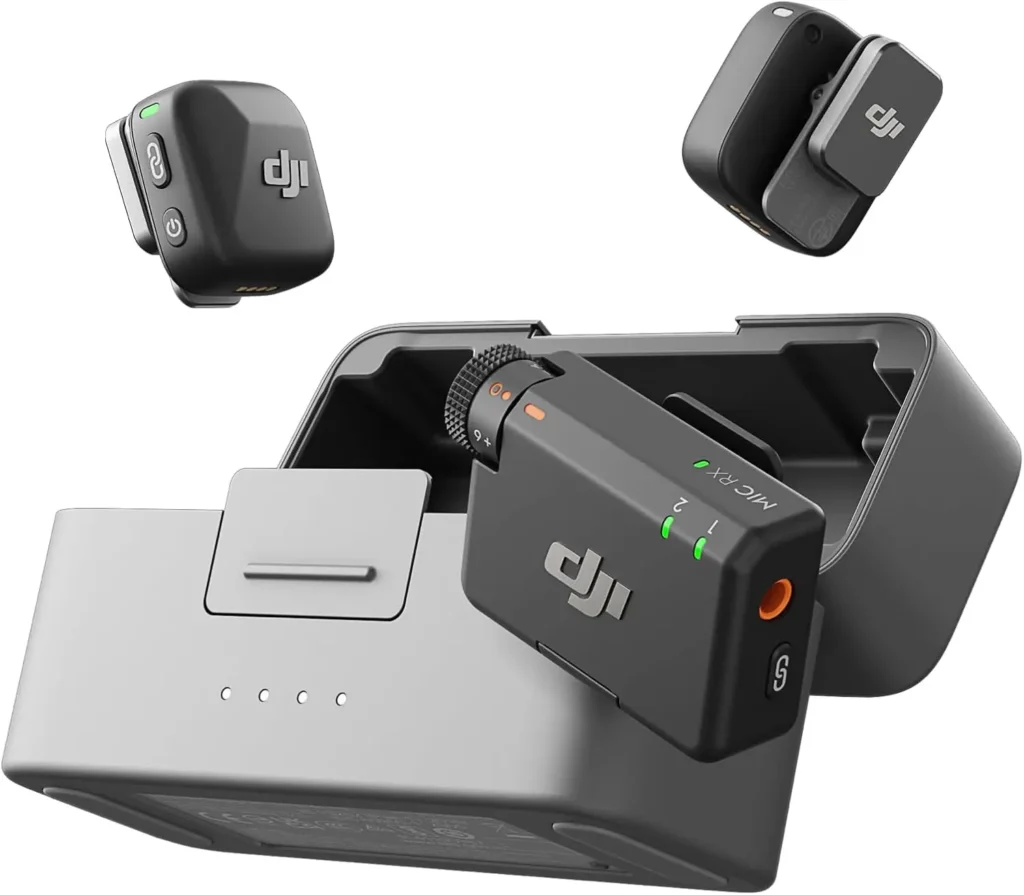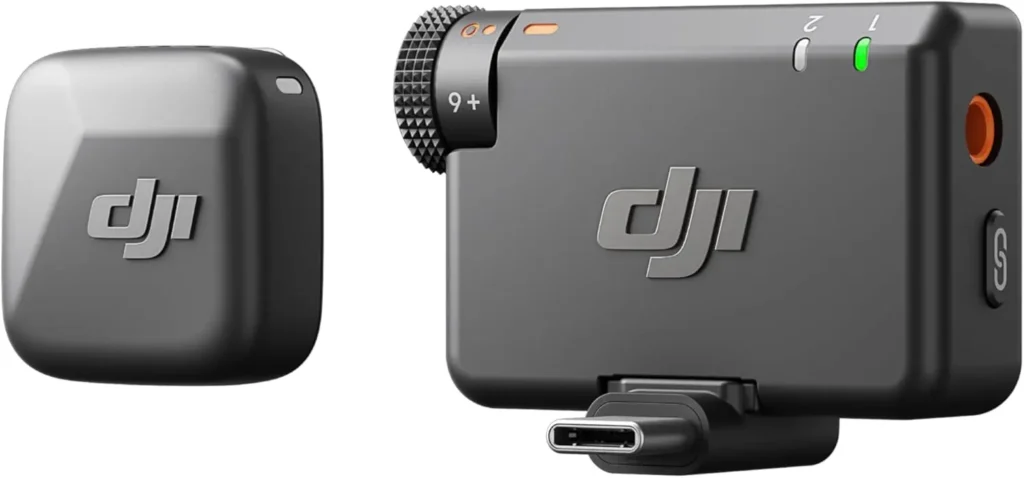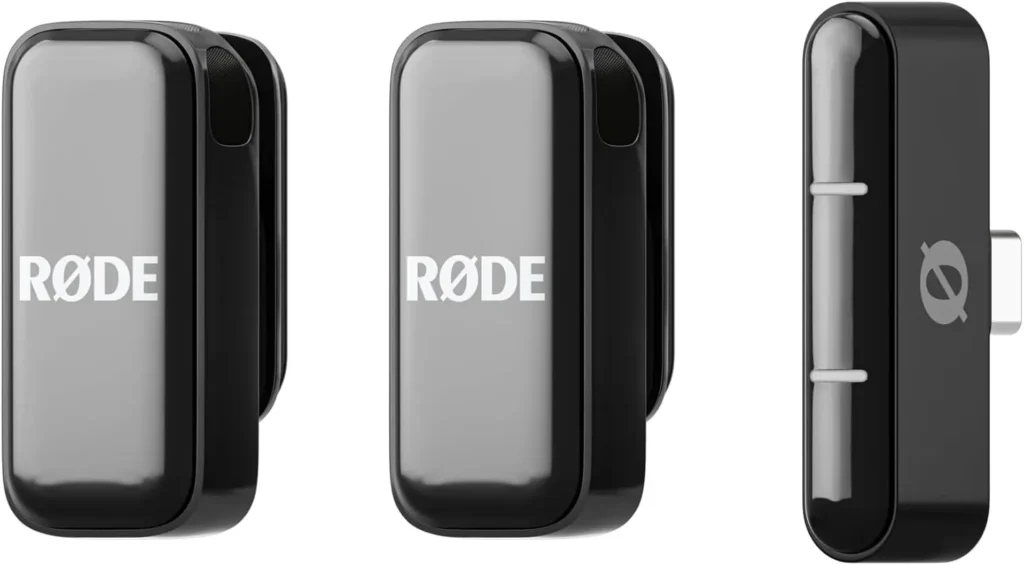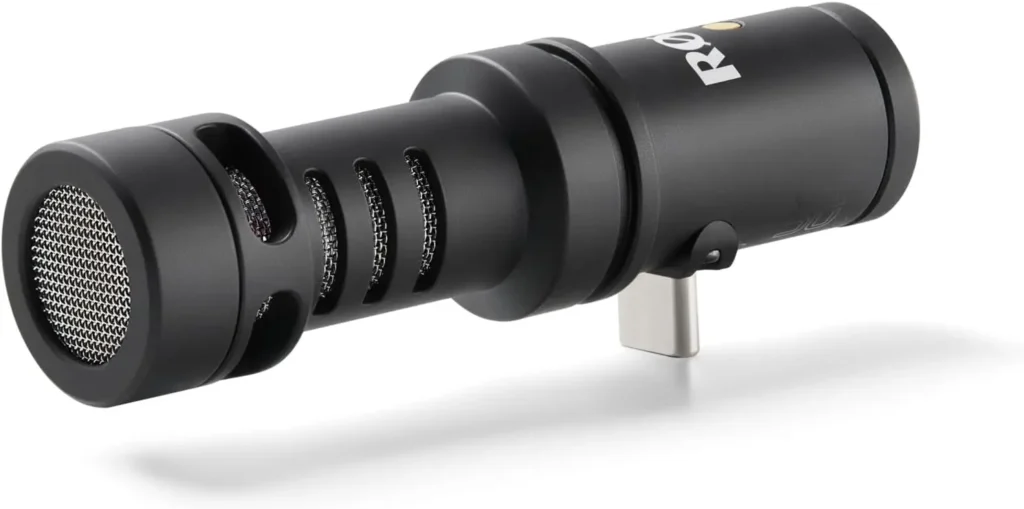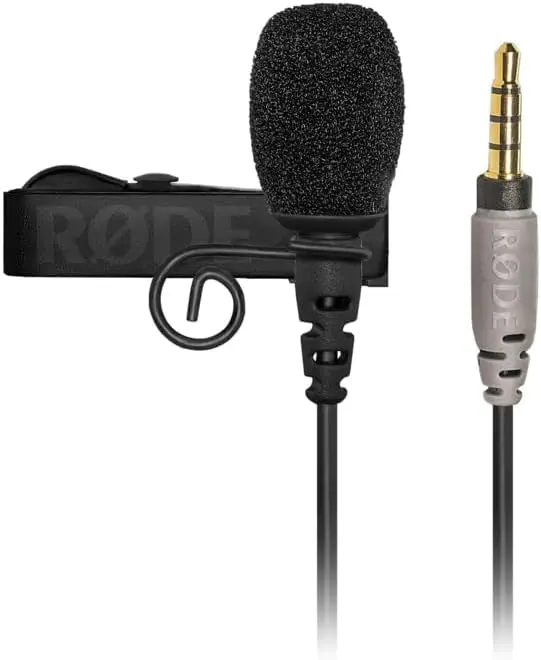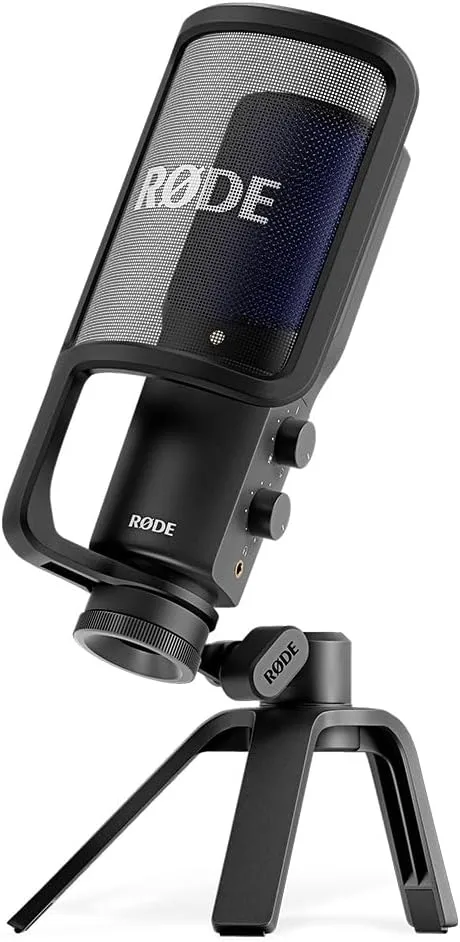The best smartphone microphones - iPhone & Android - Wireless, jack or USB-C?
Smartphones often already have an acceptable built-in microphone. But when should you buy a microphone for your smartphone?
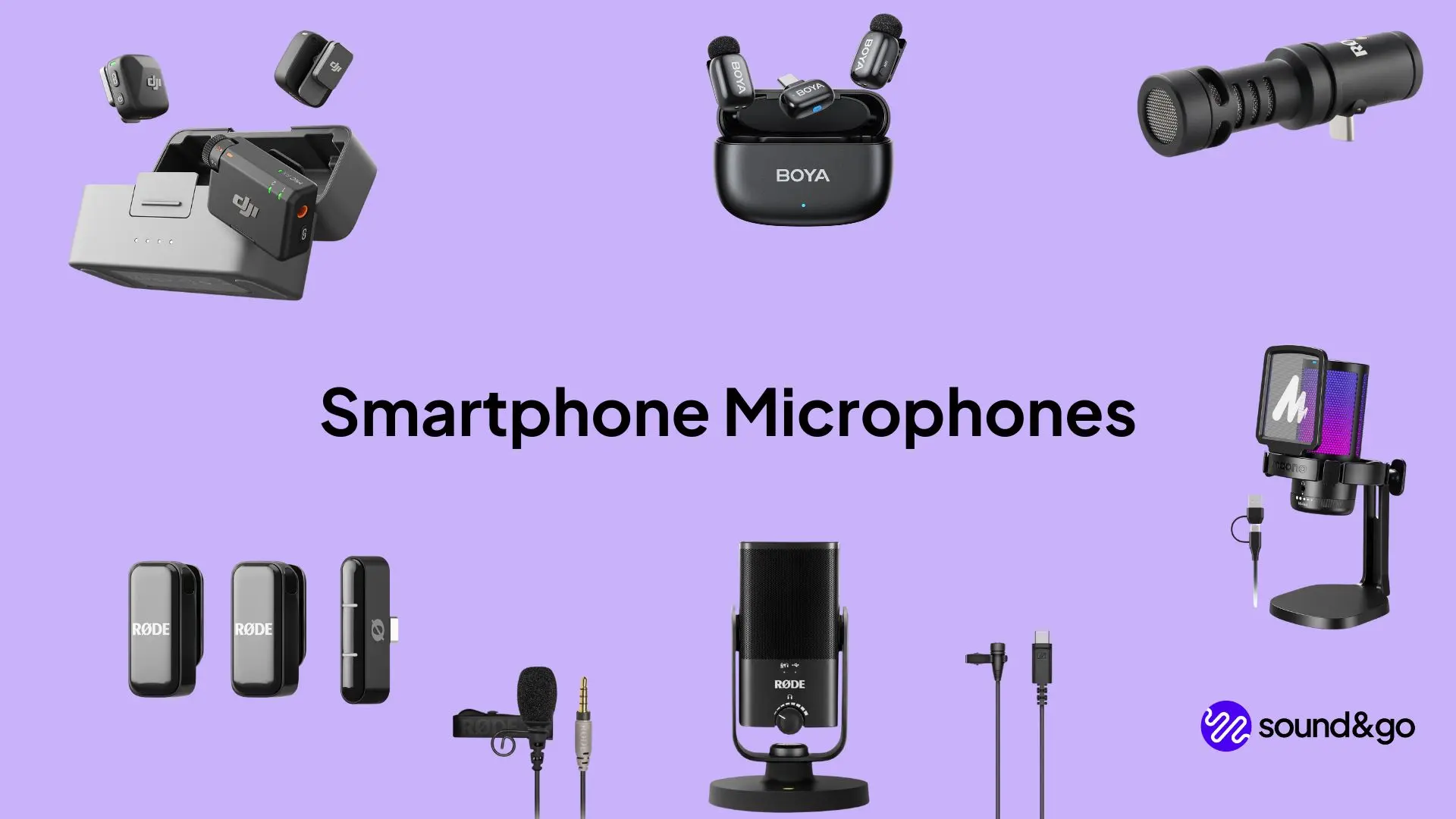
Our recommendations: Smartphone microphones
- Use our affiliate links and support our work.
Our website is free of advertising banners and we state transparently when we have been sent a product. By purchasing from our affiliate partners you do not pay more and support us. Thank you!
Option 1: The wireless microphones (including Bluetooth)
For a comprehensive comparison, please take a look at our wireless microphone comparison. There we list all models including ratings. For the sake of clarity, we are only listing the top 3 wireless devices for smartphones in this article.
Advantage: You are completely mobile and always have direct sound, even when you are away from your smartphone.
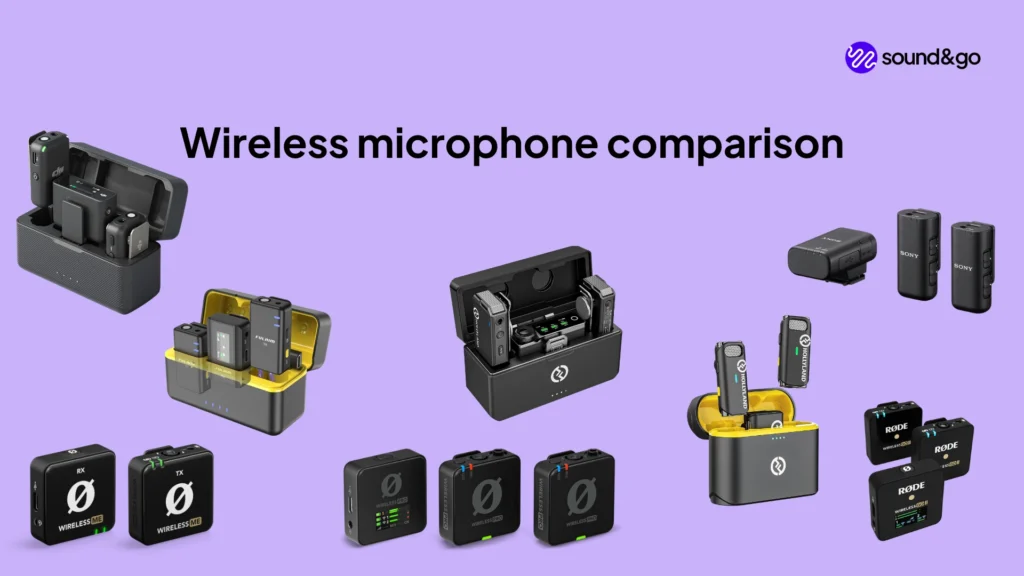
Budget solution: Boya “Boyamini”
We received this device as a gift. We were allowed to keep it, but to be honest: we will probably give it away. It’s a really poor quality microphone, it overdrives when you talk louder, it’s noisy and it just doesn’t feel worthwhile. We wouldn’t recommend budget microphones unless you really can’t get any more money together!
There is a USB-C version and a Lightning version, or you can buy the more expensive combination version with both adapters. But as we said: We do not recommend this microphone!
Premium solution for one person
If you are only recording one person, then you may be able to manage with a slightly more expensive, but much higher quality solution: the DJI Mic mini as a single version. Find out more about the Mic Mini model below or in our DJI Mic Mini Review.
Røde Wireless Micro
The Wireless Micro has two model options: One with USB-C connection and one with Lightning. This means you can use the microphone with both iPhones and Android devices. The system is wireless and if you install an update via the Røde smartphone app, you can even connect the microphones to your phone via Bluetooth without a receiver. Super nice!
You also get a practical case and a great all-in-one solution. And the sound is really good! As with the larger models, such as the Rode Wireless Go II, you also get a windscreen. Find out more in our Røde Wireless Micro Review.
DJI Mic Mini
The last mini microphone we want to introduce in the wireless category is the DJI Mic Mini, because it is something like the “premium” solution for small smartphone microphones. Although the adapter for Lightning costs a hefty $19 extra, the DJI Mic Mini offers the best overall package in the wireless microphone category, just behind the Røde Wireless Micro. Really practical for vlogs and video recordings with your cell phone! In addition to the charging case and windprotectors, you also get a practical bag in which you can store accessories and microphones.
There is also two-stage noise suppression. The Røde can’t do that. You also have the option of connecting a camera to the Mic Mini, as the receiver has a 3.5 mm jack output.
Option 2: Mobile USB-C or Lightning smartphone microphone
Before wireless microphones and lavalier microphones developed so well, there were still the classic “Smartphone microphones”. These were simply high-quality external microphones with an integrated connection for smartphones.
Due to the trend towards wireless microphones, however, these have become rarer and some are no longer being developed. However, compatibility with large diaphragm microphones is improving all the time! With variant 3, more and more microphones are being added that you can also use with your smartphone or tablet.variant 2: Mobile USB-C or Lightning cell phone microphone
Rode VideoMic Me - Lightning or USB-C
The Røde VideoMic Me is a compact directional microphone that plugs directly into the Lightning or USB-C ports of smartphones and reduces ambient noise thanks to its cardioid characteristic. It is bus-powered, meaning it does not require an external power source, and offers direct monitoring via a 3.5 mm headphone output.
The supplied windscreen ensures better recordings outdoors. For vlogs, interviews and spontaneous video recordings, it delivers clear sound and is significantly better than the built-in microphone, but does not reach the level of larger USB or wireless systems. Overall, it is an inexpensive and easily transportable solution for on the go.
Sennheiser XS Lav as USB-C
The XS Lav is available as a jack and USB-C version, a good audio solution if you have an Android, as there are reports that the USB-C version is not compatible with the new iPhones. Otherwise, you can also get the TRRS version here and use your Lightning/USB-C adapter. It really is a mini-microphone and can disappear completely with good cabling.
Røde Smart Lav+
The Smart Lav+ is great for content creators who want to make sound recordings outdoors and are alone. You can simply use the TRRS jack to Lightning / USB-C adapter and you’re ready to go! The SmartLav+ is practical for inconspicuous recordings, but is somewhat susceptible to fabric rustling. So be sure to wire it up well and test it!
Option 3: USB microphones that are compatible with smartphones
Content creation is becoming increasingly popular: whether podcasts, TikTok or YouTube, you need good sound so that the target group doesn’t switch off.
Advantage: You have a really rich “studio sound”
Maono DGM20
The Maono is a real budget solution, as it is really cheap, but not particularly high quality.
It has advantages and disadvantages, which is no surprise given the price. We don’t get studio quality and a rather loose microphone boom, but it has to be said: the DGM20 sounds really acceptable.
However, you are buying from China, without support and a real guarantee. You can find more information in our Maono DGM20 Review.
Røde NT USB Mini
The NT USB Mini is a great combination of budget and good sound. It requires little power and is compatible with all smartphones using standard adapters!
It has a headphone connection so you can hear yourself and a USB-C connection. The stand for the NT USB Mini is also included. Practical! Despite the price, the sound is very pleasant and relatively low-noise for the price. The microphone has a light pop protection integrated, so if you tend to have strong P and B sounds or like to get close to the USB microphone, you should also get a pop filter. You can find out more about this model in our Rode NT USB review.
Røde NT USB+
The NT USB Plus would be our favorite solution. This model also has a low voltage and you can use it with standard adapters.
This model is also worth a closer look. Thanks to the controls and the headphone connection on the microphone, you can easily hear yourself and check the sound of your audio track directly during recording. It is particularly practical that the microphone package already includes a pop filter, as well as a small holder that also functions as a lightweight bumper. A really simple plug and play solution. This microphone is attractive for beginners, but can also make you very happy in the medium term. The microphone comes with a holder and pop filter.
There is also the NT-USB, whose microphone capsule is slightly cheaper. So a small downgrade to the NT USB+. As this microphone is an old generation, it can also be a bargain. You can find out more about the different Røde NT USB models in our big Rode NT USB review.
Any other USB microphone to your iPhone with this adapter:
As the problem with USB microphones is usually not the adapter itself, but the power supply, there is a little trick here: If the microphone is modern enough and supports “UAC 1.0 or 2.0”, then you can connect the microphone with the linked camera adapter. This works because you can connect not only the USB cable but also a power cable to this adapter. This will then supply the microphone with enough power.
Don’t skimp on the adapter, not all inexpensive alternatives can transmit the correct protocols or are not certified by Apple as accessories!
Microphone for iPhone and Android: Our conclusion
Of course, there are also more solutions in this area than we could present, but there are now the favorites when it comes to a microphone for cell phones.
An external microphone for smartphones is worthwhile as soon as integrated sound recordings are no longer sufficient, for example for vlogs, interviews or podcasts. Wireless systems such as Røde Wireless Micro or DJI Mic Mini offer freedom of movement and good sound quality, but are usually more expensive. Plug & play microphones (USB-C/Lightning) such as the Rode VideoMic Me or lavalier models are compact and user-friendly, but have rarely been developed further.
USB microphones with camera adapters deliver “studio sound”, but often require an external power supply. Lavalier microphones with 3.5 mm adapters are inexpensive and unobtrusive, but require careful cabling and wind protection. Before buying, you should check compatibility, power requirements and intended use. If you regularly create content, it is better to invest in high-quality models; occasional users can often get by with simple lavalier or plug-in solutions.
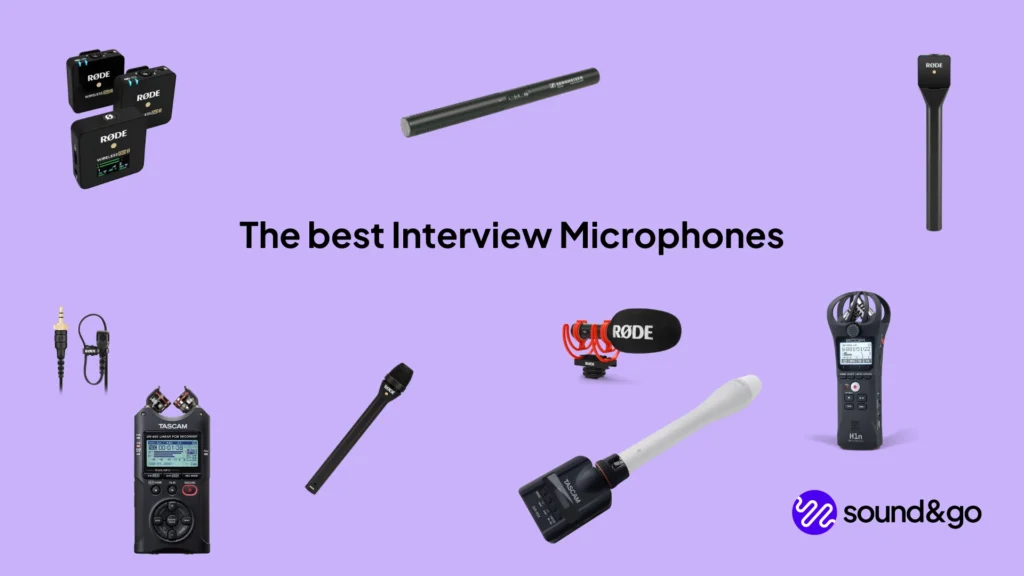
Links marked with * are affiliate links. There are no additional costs for you, some of these links are with an automatic discount for you. We mark these links for transparency and would never recommend bad products. Find out more here: Our partners.

